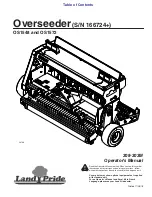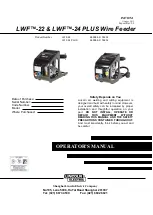
USF-1600 User Manual
- page 30 -
•
Crushing of the outer layer (formation of cracks).
•
Deformations that do not correspond to the natural shape of the hose or pipe, under pressure or
without pressure, or during bending (e.g. separation of layers, formation of bubbles, spot crumbling,
cracks, crumbling of bending points, etc.).
•
Leaks.
•
Damage or deformation of a tip (affecting the seal), (minor surface defects do not constitute grounds
for replacement).
•
The hydraulic hose disconnects from the terminal (connector).
•
Corrosion of a tip (connector), resulting in reduced performance and reliability.
•
Failure to comply with the installation specifications.
Assembly and disassembly of hydraulic hoses
The following instructions must be strictly observed when assembling or disassembling hydraulic hoses:
•
Use only genuine hydraulic hoses.
•
Always take care of cleanliness.
•
When assembling hydraulic hoses, they must be mounted in such a way that in each operating condition:
✓
They were not exposed to stretching, other than that exerted by their own weight.
✓
They were not subject to crushing on short sections.
✓
They were not exposed to external mechanical influences.
✓
The friction of the hoses against the machine components or between them was avoided; for
this purpose, they should be correctly positioned and fastened. Otherwise, the hydraulic lines
should be protected with covers. Cover the components with sharp edges.
✓
The admissible bending angle was not exceeded.
•
If a hydraulic hose is connected to moving parts, the length of the hose should be measured in such a
way that the total movement range was not less than the smallest allowable radius of bend and/or that
the line was not otherwise subjected to friction.
•
Hydraulic hoses should be fastened in places provided for this purpose. Therefore, avoid such brackets
that obstruct the natural movement and modification of the length of the line.
•
Hydraulic hoses must not be painted.
5.4. Lighting Installation

























